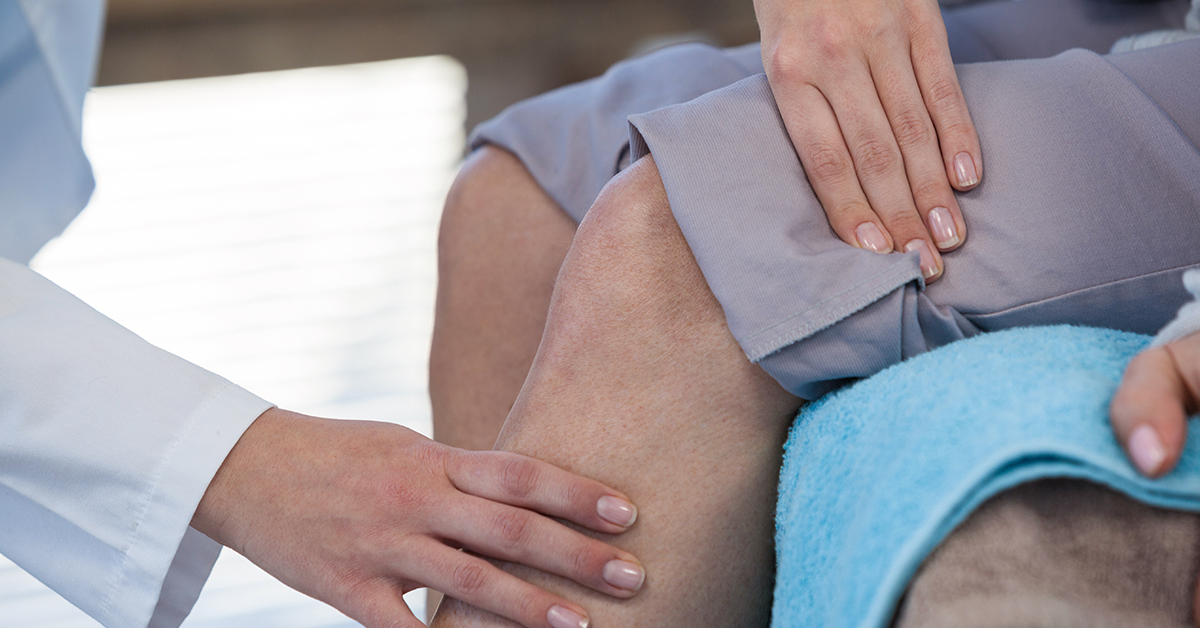
MAKOplasty
OA is a form of arthritis and a degenerative joint disease characterized by the breakdown and eventual loss of joint cartilage. Cartilage is a connective tissue that serves as a cushion between the bones of a joint. With OA, the top layer of cartilage breaks down and wears away, allowing bones under the cartilage to rub together, causing pain and discomfort.
The most common surgical intervention for knee OA is a total knee replacement. During this procedure, the natural joint is removed and replaced with an artificial implant. This treatment option is usually offered to patients with late-stage osteoarthritis of the knee.
Since all three compartments of the knee are replaced in total knee replacement, it is not always optimal for patients with early to mid-stage osteoarthritis in just one or two compartments of the knee. For these patients, MAKOplasty® Partial Knee Resurfacing may be a more appropriate solution.
What Makes MAKOplasty uKNEEque?
MAKOplasty Partial Knee Resurfacing is a minimally invasive procedure for those suffering with painful early to mid-stage osteoarthritis of the knee. It is performed using the proven robotic arm technology of the RIO® Robotic Arm Interactive Orthopedic System.
MAKOplasty enables surgeons to accurately resurface only the diseased portion of the knee, saving as much of the original knee as possible - including healthy bone and ligaments. This minimally invasive approach, combined with a patient-specific surgical plan and more accurate implant placement, results in a more natural feeling knee compared with total knee replacement.
MAKOplasty can be performed on any one of the three knee compartments: the inside (medial), behind the kneecap (patellofemoral), or outside (lateral) compartments as a unicompartmental procedure, or it can be performed on both the medial and patellofemoral portions of the knee together, which is known as a bicompartmental procedure.
How Does MAKOplasty Work?
Because no two knees are the same, MAKOplasty customizes the procedure for your unique anatomy. Before surgery, a computed tomography (CT) scan is taken of your knee, and the RIO® System creates a 3-D anatomical model. This allows the surgeon to plan the placement and alignment of your knee implants prior to surgery, and helps to accurately execute the plan.
RESTORIS® MCK Family Of Implants
To ensure your implants are optimally positioned and that the soft tissues of your knee are balanced for natural movement, your surgeon can test and fine-tune the plan during surgery by moving the leg through different ranges of motion. The RIO® provides measurements and visualization of your unique anatomy, enabling the surgeon to adjust and customize the plan as needed.
Once the surgical plan is finalized, it is programmed into the RIO, which creates a safety zone for bone removal. During surgery, the surgeon guides the robotic arm while preparing the bone for the implant. The RIO assists by ensuring that bone removal stays within the safety zone of the surgical plan, providing auditory, visual, and tactile feedback, stopping the robotic arm if necessary before bone can be removed outside the planned area. Once the bone preparation is complete, the implants are placed in the knee.
If I undergo MAKOplasty, What Can I Expect?
MAKOplasty can be performed as either an inpatient procedure or on an outpatient basis depending on what your orthopedic surgeon determines is right for you. Hospital stays average anywhere from one to three days; outpatients return home the same day.
In many cases, patients are permitted to walk soon after surgery, drive a car in the first few weeks, and return to normal daily activities shortly thereafter.
What Is The Lifespan Of A MAKOplasty Implant?
All implants have a life expectancy that depends on several factors including the patient's weight, activity level, quality of bone stock, and compliance with their physician's orders.
Proper implant alignment and accurate positioning during surgery are also very important factors that can improve the life expectancy of an implant. Through the use of RIO® robotic arm technology, implants can be optimally aligned and positioned to optimize surgical outcomes. RESTORIS® MCK implants enable the treatment of one or two compartments with OA disease. Because very little bone is actually removed during a MAKOplasty procedure, the implants can be replaced with another procedure such as a total knee replacement, if necessary.

